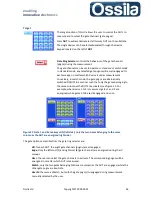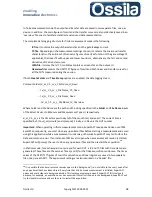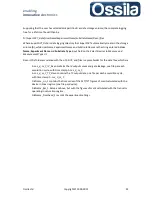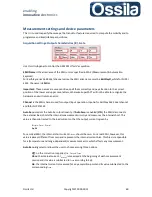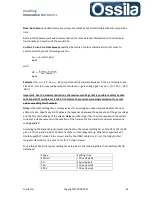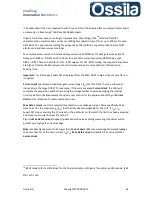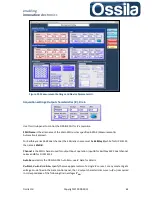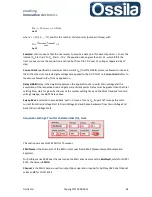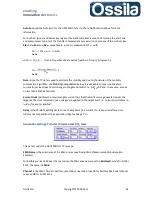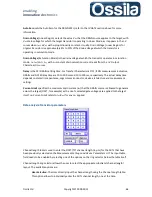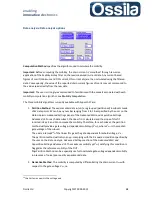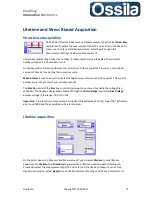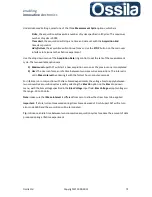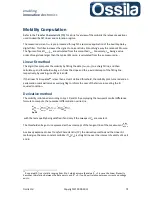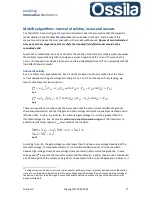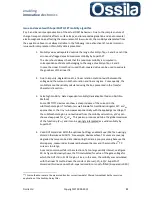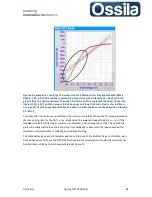
enabling
innovative
electronics
Ossila Ltd
Copyright © 2009-2015
68
Data analysis: Data analysis options
Computation Method
specifies the algorithm used to calculate the mobility.
Important:
Before computing the mobility, the drain current is ‘smoothed’ through recursive
application of the Savitzky-Golay filter on the raw (measured) current data. Any current-based
figures of merit (minimum and OFF current, ON current etc) are then calculated using the filtered
data. Consequently, the value of the reported drain current figures of merit may not correspond to
the values read directly from the raw data.
Important:
The user is strongly recommended to familiarise with the caveats associated with each
mobility computation algorithm, see
Mobility Computation
.
The three mobility algorithms currently available with SuperFACT are:
1.
Partition Method
. The experimental data
I
DS
(
V
GS
) are grouped (partitioned) in subsets made
of
M
data points.
M
can be any number ranging from 5 to 10 as specified by the user on the
Data Analysis: Advanced Settings
panel of the
Advanced SMU and Acquisition Settings
Advanced
UI. For each data subset, the linear fit is calculated and the slope of this fit
inserted in Eqs. 4 and 9 to compute the mobility. Therefore, for each subset, the partition
method will provide a gate voltage–dependent mobility
μ
i
(
GS
,
i
), where
GS,
i
is the median
gate voltage of the subset
i
.
The
x
-axis intercept
20
of the linear fits gives the gate dependent threshold voltage,
V
Th
,
i.
The partition method will return any
μ
i
complying with the R-squared condition specified by
the user on the
Data Analysis: Advanced Settings
section of the
Advanced SMU and
Acquisition Settings Advanced
UI. The maximum mobility
μ
i
(
GS
,
i
) satisfying this condition is
flagged as the
reference mobility
of the DUT.
Tip:
Partition Method can be especially useful to calculate gate-voltage dependent mobility
in presence of noise/poor quality experimental data.
2.
Derivative Method
. The mobility is computed by differentiating the drain current I
DS
with
respect to the gate voltage V
GS
, i.e.
20
the Cartesian x-axis is the voltage axis



